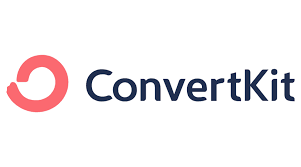As we step into 2024, the digital marketing arena is more vibrant than ever, and at its heart lies the quintessential tool of email marketing. In this landscape, two names stand out: ConvertKit and Mailify. Both are powerful in their own right, but the question is, which one is the best fit for your needs this year? This detailed comparison aims to unravel that mystery, guiding you through each aspect of these tools in a clear, conversational manner. So, let’s dive into this crucial analysis.
| ConvertKit | Mailify |
|---|---|
 |  |
| G2 Score – 4.4 out of 5 stars | G2 Score – 4.3 out of 5 stars |
| TrustRadius Score – 8.8 out of 10 | TrustRadius Score – Nil |
Email Automation: Crafting the Perfect Customer Journey
Email automation is the driving force behind effective and efficient email marketing. It’s about delivering the right message to the right person at the right time, with minimal manual intervention. Let’s compare how ConvertKit and Mailify handle this pivotal feature.
ConvertKit’s Automation Capabilities
ConvertKit has established itself as a favorite among content creators and small businesses, largely thanks to its robust automation features. The platform offers a visually appealing and intuitive automation builder, allowing users to easily create complex email sequences and trigger-based emails.
What sets ConvertKit apart in the realm of automation is its user-centric design. The process of setting up automated email funnels is streamlined and straightforward, making it accessible even to those who are not tech-savvy. Whether you’re looking to automate a welcome series, a product launch, or a nurture sequence, ConvertKit makes it hassle-free.
Another key aspect of ConvertKit’s automation is its focus on personalization. You can tailor your emails based on subscriber behavior, ensuring that each communication feels personal and relevant. This level of personalization is crucial in today’s email marketing landscape, where engagement is king.
Mailify’s Approach to Email Automation
Mailify, while perhaps less known than ConvertKit, holds its ground with powerful automation capabilities. The platform offers a range of automation options, from basic autoresponders to more complex, behavior-triggered sequences.
One of the strengths of Mailify is its flexibility. The platform caters to both novice users and those with more advanced email marketing needs. For businesses that require intricate, multi-step email sequences, Mailify provides the tools and flexibility needed to create these effectively.
Mailify also incorporates advanced segmentation within its automation, allowing for highly targeted email campaigns. This segmentation capability, combined with automation, empowers users to create highly personalized and effective email journeys for their audience.
Tailoring Automation to Your Needs
In summarizing the comparison of automation features, it’s clear that both ConvertKit and Mailify offer strong capabilities. ConvertKit is the go-to for ease of use, simplicity, and effective personalization, making it ideal for content creators and small businesses. Mailify, on the other hand, offers a more flexible and comprehensive automation suite, suited for those who require detailed, complex email sequences.
User Interface and Experience: Navigating with Simplicity and Efficiency
In the realm of email marketing, the ease and intuitiveness of a tool’s user interface (UI) can significantly impact your productivity and campaign success. A great UI simplifies complex tasks, making your email marketing efforts more enjoyable and less time-consuming. Let’s compare the UI and overall user experience (UX) of ConvertKit and Mailify.
ConvertKit’s Streamlined User Interface
ConvertKit is often praised for its clean, intuitive UI. It’s designed with the user’s ease in mind, ensuring that even those with minimal technical expertise can navigate the platform effortlessly. This approach is particularly evident in their visual automation builder, which allows users to create and manage email sequences with ease.
The overall UX of ConvertKit is characterized by simplicity and clarity. From setting up campaigns to analyzing performance metrics, the process is straightforward. The platform’s design is minimalist, avoiding unnecessary clutter and focusing on what users need the most. This user-centric design philosophy makes ConvertKit a favorite for content creators and small businesses who seek efficiency without complexity.
Mailify’s Comprehensive yet User-Friendly Interface
Mailify takes a slightly different approach to its UI. It offers a more feature-rich interface that caters to users seeking a broader range of functionalities. Despite its comprehensive feature set, Mailify manages to maintain a user-friendly interface. It strikes a balance between offering advanced features and keeping the user experience uncluttered and navigable.
One of Mailify’s strengths is its dashboard, which provides a quick overview of your campaigns’ performance and easy access to key features. The platform also offers helpful guides and tutorials within the interface, assisting users in making the most out of its capabilities. For businesses that need a more robust tool but still value ease of use, Mailify presents an appealing option.
Choosing a UI That Fits Your Workflow
Both ConvertKit and Mailify offer effective solutions in terms of UI and UX, but they cater to different user preferences. ConvertKit is ideal for those who prioritize a straightforward, no-fuss interface that makes email marketing simple and efficient. It’s perfect for users who want to focus on content rather than navigating a complex tool.
Mailify, on the other hand, is well-suited for users who require a more comprehensive set of features but still appreciate an interface that is not overwhelming. Its balance of advanced functionalities and user-friendliness makes it a strong contender for businesses with more diverse email marketing needs.
Pricing and Value for Money: Balancing Cost with Features
When it comes to choosing an email marketing tool, the pricing structure is a significant consideration. It’s essential to balance the cost against the features and value offered. Let’s dive into how ConvertKit and Mailify stack up in terms of pricing and overall value for your investment.
| ConvertKit | Free Plan: Offers basic features for up to 1,000 subscribers, including email broadcasts, landing pages, and forms. Creator Plan: Starting at $29/month for up to 1,000 subscribers, including automation and third-party integrations. The price increases with more subscribers. Creator Pro Plan: Starting at $59/month for up to 1,000 subscribers, adding advanced features like newsletter referral system, subscriber scoring, and advanced reporting. |
| Mailify | Mailify offers a unique credit-based system, where users buy email credits that can be used to send emails. Essential Plan: Includes basic features like email campaigns and forms. Pricing starts at around $69 for 5,000 credits. Premium Plan: Adds advanced features such as SMS marketing, automation, and landing pages. Pricing starts at around $129 for 5,000 credits. Exclusive Plan: Offers bespoke services and support, with pricing available upon request. Note: The number of emails you can send per credit varies based on the plan and additional features. |
ConvertKit’s Pricing Strategy
ConvertKit operates on a subscriber-based pricing model, which is quite common in the email marketing world. This model means that the cost increases as your subscriber list grows. ConvertKit offers a free plan for beginners, which includes basic features suitable for those just starting out in email marketing.
As you climb up the tiers in ConvertKit’s pricing model, more advanced features become available. These include enhanced automation capabilities, premium support, and additional integrations. ConvertKit’s pricing is transparent, with no hidden fees, making it easier for businesses to plan their expenses and understand what they are paying for.
The value ConvertKit offers lies in its ease of use, effective automation, and excellent customer support. This makes it a valuable tool for content creators and small to medium-sized businesses that need a straightforward, effective email marketing solution.
Mailify’s Approach to Pricing
Mailify’s pricing structure is different from ConvertKit’s. Instead of a subscriber-based model, Mailify offers a pay-as-you-go option, as well as monthly and annual subscription plans. This flexibility can be advantageous for businesses with varying email marketing needs.
The pay-as-you-go option is particularly appealing for those who don’t send emails regularly but still require access to robust email marketing tools. On the other hand, the subscription plans are more suited for businesses with consistent email marketing activities, offering a more cost-effective solution for frequent use.
Mailify’s value proposition lies in its comprehensive feature set, which includes advanced automation, detailed analytics, and a user-friendly interface. This makes it a strong contender for businesses that need a more feature-rich email marketing platform but are also mindful of their budget.
Matching Pricing with Your Marketing Goals
When comparing ConvertKit and Mailify in terms of pricing and value, it’s important to consider your specific email marketing needs and budget. ConvertKit is ideal for those who prefer a simple, subscriber-based pricing model and need an easy-to-use platform with solid automation and support. Mailify, with its flexible pricing options and comprehensive features, is more suited for businesses that require a broader range of functionalities and have variable email marketing activities.

Related: Check out our free SEO suite

Customer Support and Community Engagement: Ensuring a Smooth Email Marketing Experience
In email marketing, having access to responsive customer support and a vibrant community can significantly enhance your experience and success. These elements provide valuable assistance, learning opportunities, and a sense of connection. Let’s see how ConvertKit and Mailify perform in these crucial areas.
ConvertKit’s Support and Community Focus
ConvertKit is renowned for its exceptional customer support. They offer multiple avenues of support, including email, live chat, and a comprehensive knowledge base. Users often highlight the quick response times and the helpfulness of the support team, which is crucial for resolving issues swiftly and efficiently.
Beyond direct support, ConvertKit fosters a strong sense of community. They have established a network of bloggers, content creators, and small business owners who regularly interact through forums, social media groups, and webinars. This community aspect is particularly beneficial for networking, sharing strategies, and learning from peers.
Mailify’s Approach to Customer Assistance
Mailify, while less known in terms of its community presence, still offers solid customer support. The platform provides support through email, phone, and an extensive FAQ section. Their response times are generally good, and users appreciate the technical expertise the support team brings, especially for more complex queries.
While Mailify’s community engagement might not be as extensive as ConvertKit’s, they do offer educational resources and tools like tutorials and guides, which are helpful for users looking to deepen their understanding of email marketing.
Selecting a Tool That Supports Your Journey
It’s clear that both ConvertKit and Mailify recognize the importance of customer support. ConvertKit stands out for its additional focus on community building, making it an excellent choice for those who value peer-to-peer learning and networking, along with strong support. Mailify, with its competent support system, is a suitable option for those who prioritize reliable technical assistance and comprehensive resources to guide their email marketing efforts.
Examining Deliverability and Email Performance
Email deliverability is a cornerstone of successful email marketing. It’s not just about sending messages; it’s about ensuring they reach the inbox, engage the recipient, and prompt action. Let’s assess how ConvertKit and Mailify handle this essential aspect, comparing their capabilities in ensuring your emails not only land but also make an impact.
ConvertKit’s Focus on High Deliverability
ConvertKit is known for its strong emphasis on email deliverability. They employ several best practices to ensure emails avoid the spam folder and reach the intended inboxes. This includes maintaining a strong sender reputation, offering features for list cleaning, and providing guidance on crafting effective, engaging emails.
ConvertKit also offers insightful analytics to track the success of your emails. This includes open rates, click-through rates, and other vital metrics, enabling you to refine your strategies for better engagement and improved deliverability over time.
Mailify’s Approach to Ensuring Email Performance
Mailify equally recognizes the importance of deliverability. They provide advanced features like spam testing and detailed analytics to monitor and improve the performance of your email campaigns. Mailify’s platform enables you to conduct A/B testing and segmentation, further optimizing your emails for the best possible performance.
In addition, Mailify’s focus extends to the overall design and content of emails, ensuring they are not only deliverable but also visually appealing and engaging. This comprehensive approach to email performance makes Mailify a viable choice for businesses focused on both the technical and creative aspects of email marketing.
Maximizing Your Email Marketing Impact
Both ConvertKit and Mailify demonstrate a strong commitment to ensuring high email deliverability and performance. ConvertKit is particularly suited for those who value straightforward yet effective strategies for reaching their audience’s inboxes. Its user-friendly analytics also help in continuously improving campaign performance. Mailify, with its detailed testing capabilities and comprehensive approach to email design and content, is ideal for businesses that need a more in-depth and technical approach to maximize their email marketing effectiveness.
Integration Capabilities and Analytics: Enhancing Email Marketing Efficiency
Integrations with other digital tools and comprehensive analytics are crucial for maximizing the efficiency and effectiveness of email marketing campaigns. These features can streamline workflows and provide valuable insights into campaign performance. Let’s compare how ConvertKit and Mailify measure up in these areas.
ConvertKit’s Integration and Analytics Strengths
ConvertKit offers a wide range of integrations with popular business tools and services. This includes eCommerce platforms, CRM systems, and blogging platforms, among others. These integrations simplify the process of syncing your email marketing efforts with other areas of your digital strategy, making it a seamless experience.
When it comes to analytics, ConvertKit provides clear, actionable insights. Users can easily track key metrics such as open rates, click-through rates, and subscriber growth. The platform’s analytics are designed to be user-friendly, providing you with the necessary information to make informed decisions about your email marketing strategies.
Mailify’s Approach to Integration and In-Depth Analytics
Mailify also offers a robust set of integration capabilities. Their platform can connect with a variety of systems and tools, ensuring that users can incorporate their email marketing campaigns into a broader range of business functions.
In terms of analytics, Mailify goes a step further by offering detailed insights into campaign performance. This includes advanced segmentation data, detailed reports on subscriber behavior, and the effectiveness of individual campaign elements. For businesses that rely on data-driven decision-making, Mailify’s comprehensive analytics are a valuable asset.
Tailoring Tools to Your Marketing Ecosystem
Both ConvertKit and Mailify provide strong integration capabilities and insightful analytics, though their offerings cater to different needs. ConvertKit, with its broad range of integrations and straightforward analytics, is ideal for businesses and content creators who need an easy-to-use platform that integrates smoothly with other tools. Mailify, on the other hand, offers a more in-depth analytical approach and a solid set of integration options. It is well-suited for users who require detailed insights into their campaigns and want to incorporate their email marketing efforts into a complex business ecosystem.
Mobile Optimization and Future-Readiness: Adapting to Evolving Marketing Trends
In a world where mobile usage continues to rise, the ability of an email marketing tool to optimize for mobile devices is crucial. Additionally, staying ahead of the curve in terms of future trends can define a tool’s long-term viability. Let’s examine how ConvertKit and Mailify are equipped in these aspects.
ConvertKit’s Adaptability to Mobile and Future Trends
ConvertKit ensures that its templates and emails are optimized for mobile devices. This focus on mobile optimization is crucial, given the significant number of users who access their emails on smartphones and tablets. ConvertKit’s emails automatically adjust to fit various screen sizes, ensuring a seamless experience for the recipient.
In terms of future-readiness, ConvertKit shows a strong commitment to evolving with the digital landscape. Regular updates and new feature rollouts indicate ConvertKit’s dedication to staying relevant and useful to its users. They seem to have a pulse on the changing needs of their audience, particularly content creators and small businesses, adapting their tool accordingly.
Mailify’s Focus on Mobile Optimization and Technological Advancements
Mailify also places a high emphasis on mobile optimization. The platform offers responsive email designs that look great on any device, which is essential for engaging a mobile-savvy audience effectively. Their email templates are designed to ensure readability and engagement, regardless of the device used to view them.
In keeping up with future trends, Mailify incorporates the latest technological advancements into its platform. This includes the use of AI for better segmentation and personalization, along with continual updates to their toolset to meet evolving marketing needs. Their approach indicates a forward-thinking mindset, aiming to provide a tool that’s not just effective today but remains so in the future.
Staying Mobile and Ahead in the Email Marketing Game
Both ConvertKit and Mailify recognize the importance of mobile optimization and are well-equipped to handle the needs of a mobile-first audience. ConvertKit offers a user-friendly experience with mobile-optimized emails, while Mailify provides advanced mobile-responsive features and templates. Regarding future-readiness, both platforms demonstrate an awareness of the need to evolve with the times, with ConvertKit focusing on user-friendly innovations and Mailify on incorporating advanced technologies and features.
Template Diversity and Customization: Enhancing Email Creativity
Email templates play a significant role in the world of email marketing. They not only save time but also provide a foundation for creating visually appealing and engaging emails. Let’s compare the template offerings and customization options provided by ConvertKit and Mailify to see how they empower your email campaigns.
ConvertKit’s Approach to Email Templates
ConvertKit offers a variety of templates, but its approach is notably different. The platform focuses on simplicity and content-first design. This is evident in their template offerings, which are clean, minimalist, and designed to highlight the message rather than overpower it with design elements.
ConvertKit’s templates are highly customizable, allowing users to tailor them to their brand and message needs easily. This flexibility is beneficial for users who want to maintain a consistent brand identity across their emails without needing extensive design skills.
Mailify’s Rich Template Library and Customization
Mailify stands out with its extensive library of email templates. These templates are designed to cater to a wide range of styles and purposes, from newsletters to promotional emails, and are optimized for both desktop and mobile viewing.
What sets Mailify apart is the level of customization these templates offer. Users can tweak almost every aspect of the template, from layout to color schemes, making it possible to create a unique and on-brand email every time. This feature appeals to users who value creativity and want their emails to stand out in their subscribers’ inboxes.
Finding the Right Balance in Template Usage
Both ConvertKit and Mailify offer solid solutions in terms of email templates and customization, though they cater to different preferences. ConvertKit is ideal for those who prefer a clean, content-focused approach, offering templates that are simple yet effective and easy to customize. Mailify, with its extensive range of visually rich templates and deep customization options, is perfect for users who want more creative control and the ability to craft highly personalized emails that align closely with their brand aesthetics.
Conclusion
In our detailed journey through the capabilities, features, and unique offerings of ConvertKit and Mailify, we’ve uncovered what sets each platform apart in the realm of email marketing. As 2024 unfolds, the choice between these two tools depends heavily on your specific requirements, goals, and the nature of your email marketing campaigns.ConvertKit emerges as a highly user-friendly, efficient tool, making it a favorite among content creators, bloggers, and small to medium-sized businesses. Its strengths lie in its straightforward automation, intuitive user interface, and excellent customer support. ConvertKit’s focus on content-driven design and simplicity makes it an ideal choice for those who seek a no-nonsense, effective email marketing solution.
Mailify, on the other hand, offers a feature-rich platform suited for users seeking versatility and creative freedom in their email marketing efforts. With its extensive library of customizable templates, advanced analytics, and strong focus on mobile optimization, Mailify is a strong contender for businesses looking for a comprehensive and adaptable email marketing tool.Both platforms demonstrate a commitment to evolving with digital trends, ensuring their users have access to modern, effective email marketing tools. Whether you choose ConvertKit for its simplicity and focus on content or Mailify for its rich features and customization capabilities, each platform offers unique advantages to enhance your email marketing strategies.
Read Next
- ConvertKit vs Benchmark Email: The Best Email Marketing Tool for 2024
- ConvertKit vs MailerLite: The Best Email Marketing Tool for 2024
- ConvertKit vs Campaign Monitor: The Best Email Marketing Tool for 2024
- ActiveCampaign vs ReachMail: The Best Email Marketing Tool for 2024
- ActiveCampaign vs SalesHandy: The Best Email Marketing Tool for 2024






















Comments are closed.